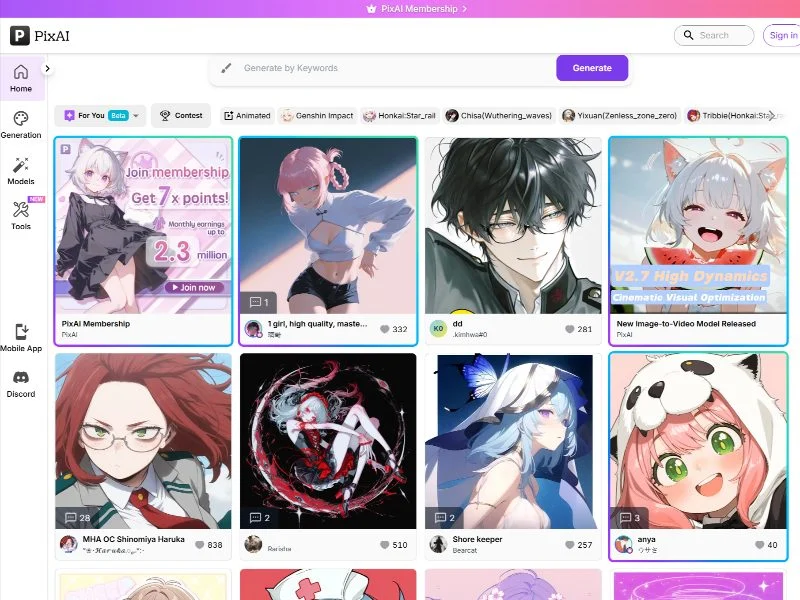Call Support
Email Address
AI Image Tools
AI Models
Pixai is an AI-powered platform that leverages advanced machine learning algorithms to provide users with cutting-edge tools for image generation, manipulation, and analysis. While the website at https://pixai.art/ appears to be currently inaccessible (potentially undergoing updates or maintenance), based on available information and the promise it holds, Pixai stands out as a pioneer in the integration of AI with creative practices.
1. Image Generation
One of Pixai’s most compelling features is its ability to generate images from scratch based on user prompts or styles. Imagine inputting a simple description or selecting a particular artistic movement, and having Pixai create a unique, visually stunning piece tailored to your specifications. This capability not only streamlines the creative process but also opens up endless possibilities for experimentation and innovation.2. Image Manipulation
Pixai goes beyond mere generation, offering sophisticated image manipulation tools. Users can alter existing images by adjusting colors, textures, styles, and even integrating elements from different sources seamlessly. This feature is particularly useful for graphic designers looking to enhance their work or for artists seeking inspiration in unexpected ways.3. Style Transfer
Inspired by neural style transfer algorithms, Pixai allows users to apply the style of one image onto another. Think of taking a photograph of a cityscape and giving it the painterly quality of Van Gogh’s work. This functionality bridges the gap between traditional art forms and contemporary digital media, creating a hybrid that celebrates both.4. Analysis and Insights
Beyond creation, Pixai also offers analytical tools that can provide insights into an image’s composition, color palette, and even emotional tone. These insights can be invaluable for artists looking to refine their craft or for businesses seeking to understand how their visual content resonates with audiences.
Add to favorites
Report abuse
Report abuse
Your report has been sent to the administrator.
Featured listings
{{ props.swiper.activeIndex + 1 }} / 6
More from this user
You may also like...

AI Tools Directory
Copyright © 2025 CogAINav.com. All rights reserved.

























